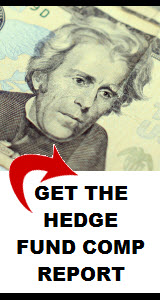Hedge funds were dealt a harsh hand in the first quarter of 2018, down 0.13 percent. However, to put things in perspective, the Dow was down 2.49 percent in its first quarter, ending at 24,719 the closing number for 2017, and falling more than 600 points to 24,103 on March 29, 2018, the last trading day of 2018’s first quarter.
The S&P 500, the unofficial (and unwarranted) benchmark for hedge fund performance, did not fare much better, down 1.22 percent in the same period.
Although in the red, the hedge fund industry performed more than 19 times better than the Dow and more than 9 times better than the S&P 500. Evaluated from this perspective, hedge fund performance through the first quarter is not too shabby.
Nonetheless
While the foregoing is a bright lens through which one can view industry results, it must also be acknowledged that this quarter’s result represents the worst showing since the first quarter of 2016. On the plus side of the equation, hedge fund industry assets grew by just over $31 billion, signaling that investors remain confident in the industry’s long-term ability to produce returns.
Flows & Assets under Management
Net Flows for the first quarter were solidly in positive territory for the fourth consecutive quarter, which resulted in total global assets under management reaching $3.215 trillion, according to HFR. While this is excellent news for the industry, it doesn’t put a nickel in the pockets of investors.
Investor Expectations
The strong performance of the hedge fund industry in 2017 raised investor expectations for 2018 to around 8.5 percent. January 2018’s strong performance only strengthened their optimism. However, first quarter results mirror the clichéd “one step forward, two steps back” mantra. The industry, as a whole, is 13 basis points into red territory. Achieving an 8.5 percent gain in the remaining three quarters will be no small feat.
The headwinds are significant. Geopolitical concerns, particularly Syria, North Korea and Iran, spell uncertainty in capital letters, the potential of a “blue wave” stalling (or reversing) the Trump administration’s economic agenda, and the question of how Jay Powell may approach inflationary pressures round out the top three concerns.
Hedge funds must average gains of around 0.96 percent in each of the remaining months to meet these expectations. Of course, this can be accomplished, as January 2018’s results confirm.
What about Hedge Fund Jobs?
As everyone understands, hedge funds are not about to throw in the towel because of one lackluster quarter. Rather, one should anticipate a full-on effort from the industry, designed to reverse their first quarter misfortunes. The industry will almost certainly step-up their pursuit of talented professionals, double down on innovative strategies and find ways to reduce operational costs.
Those interested in a career in the hedge fund industry may find no better moment than this one to realize a career as a hedge fund professional, particularly those with unique skill sets, fresh ideas, and strong work ethics. These are the attributes needed to succeed. These and a bit of good luck!






Comments on this entry are closed.